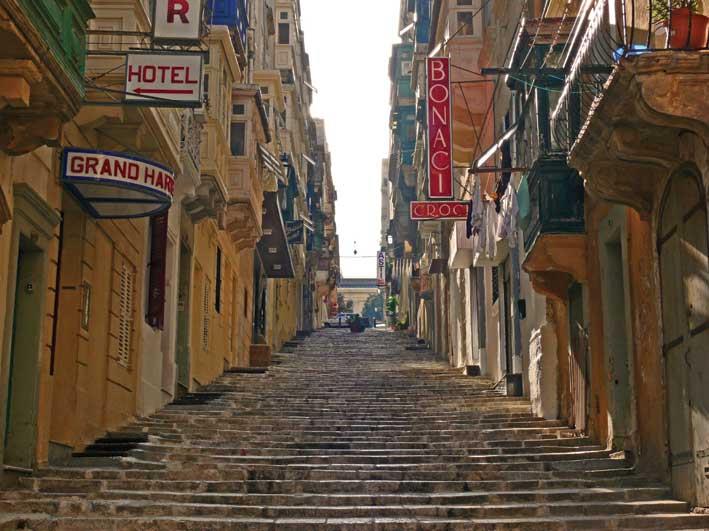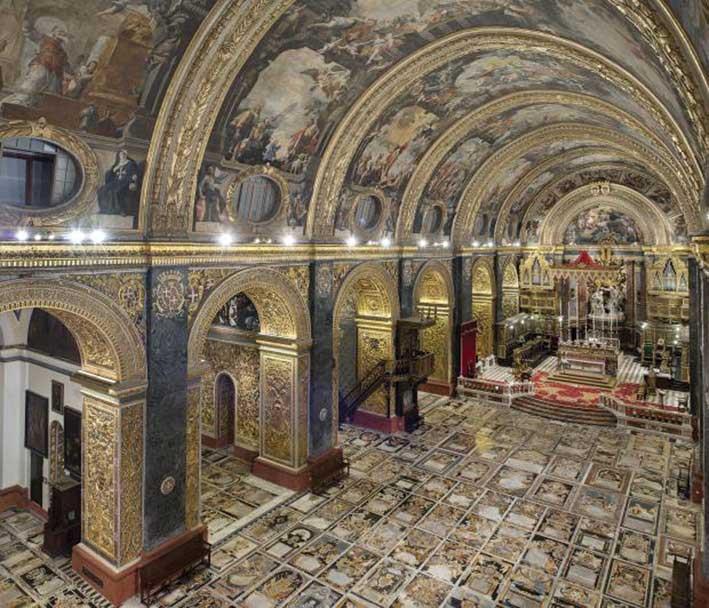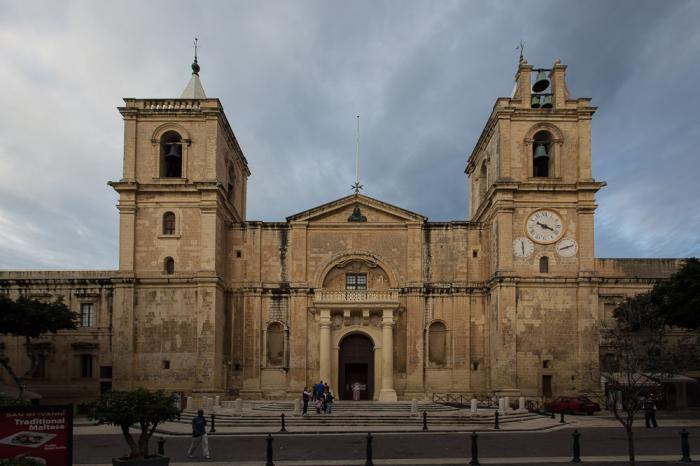Valletta is unique in style. Its Baroque buildings and Renaissance outlook adds to its beauty, splendour and character. Its modern flavour is giving the capital city a rejuvenated look with many wine bars, restaurants and coffee shops that are sprouting all over the place coupled with pedestrianisation. This is giving the place a romantic feeling especially during the times of heightened sensations when evening falls and eerie shadows cover the walls of the city’s narrow and parallel streets.
Many are the compelling and intriguing stories that have taken place in and around Valletta over many centuries since the early days when it was founded by Jean La Vallette on 18 March 1571 as the capital city. Many were the murders and executions and their consequential release of negative and dark forces and energies as evil portals opened up and made their way in the city’s spiritual realm.
Many of these accounts have been recounted in detail during this ‘ghost’ tour of the capital. This, not to mention other ghost stories which abound mainly in the Cottonera area, Manoel Island, Fort St. Angelo and also in other numerous palaces and residences around the Maltese Islands.
These stories emerged in the open mainly during the British period when the telling of ghost stories was more relaxed and tolerated as before, one would have been easily accused of witchcraft and even persecuted by the Roman Catholic Church of the of the Dark and Middle Ages.
Entering Valletta through City Gate is a good starting point to remind us of those condemned for execution during the Knights Period and whose decapitated heads were displayed close to the entrance gate as a stark warning to those bent on committing atrocious crimes.

Palazzo Ferreria
Entering into through City Gate and proceeding on the left, corner with South Street stands Palazzo Ferreria, officially known as Palazzo Buttiġieġ-Francia; a palace built in the late 19th century. The first story is one about a priest who was entrusted with a secret will by a lady but before the priest could file this will in his records he collapsed and passed away leaving the testament documents hidden inside a slit in the wall behind a column within the palace.
Because of this unfinished business of not having time to register this secret will and with the documents not being discovered, the priest’s spirit was seen lurking the palace until later restoration works revealed the hidden documents. These were presented to the authorities for registration and the paranormal activity immediately stopped and the spirit of the priest never seen again.

St Ursola Street
During the time of the British rule in Malta two drunken sailors were walking along the streets of Valetta and at one point were stopped by a lady wearing the traditional Maltese costume, ‘Għonnella’.
She asked them if they could accompany her home in St Ursola Street, where she asked them if they could help her inside as she had left the key inside. The soldiers out of chivalry decided to help out this lady.
After some time one of the two men managed to climb through the balcony of a low lying ‘Mezzanin’. On finding the key inside the sailor managed to open the door for the lady and his friend. Inside the house was richness and splendour. Now that they were in the company of a beautiful lady and in a magnificent setting, they felt more relaxed. However, as the time was late, they left but one of the sailors realised he had left a very expensive silver cigarette case inside the house and they decided they would call again on the following day to retrieve to it.
The next day they got the shock of their lives to find the same house in a dilapidated state. They were told by one of the neighbours that the house was said to be haunted and that sometimes they could see the house lit from outside.
Near ta’ Gieżu Church
Proceeding down to the bottom of the stairs of St. Ursola Street lies Ta’ Ġieżu Church. The Carnival tragedy of 1823 was a human stampede which occurred on 11 February 1823 at the Convent of the Minori Osservanti in Valletta, Malta. About 110 boys who had gone to the convent to receive bread on the last day of carnival celebrations were killed after falling down a flight of steps while trying to get out of the convent as they found the door blocked amid the screams and shouts. A number of masses were celebrated after this incident for the repose of the souls and no sightings of any paranormal activity were ever reported. But the story is quite different was not the case in the bastion around Mdina. During the French blockade a number of French soldiers were burnt alive by the Maltese insurgents and it is not the first time that horrific and frightening screams are heard in the area.

St. John’s Co-Cathedral Communal Grave
This communal grave is found in Merchants Street and holds the remains of the unknown soldiers who died during the Great Siege. Many of the men who lie there are those elite Knight and soldier heroes who died defending Fort St. Elmo and who were butchered beyond recognition and were laid to rest in this grave. These men were Knights who died without receiving any decorations. It is said that lower and upper Fort St. Elmo is haunted due to the barbaric atrocities committed there by the Ottoman invaders on the surviving Knights and Maltese soldiers.
Russian Cultural Institute
Another house said to be haunted in Valletta is just opposite the Communal Grave mentioned above. This is where Grandmaster La Vallette’s secretary, Oliver Starkey used to reside. In 1990 residents of the Russian Cultural Institute said they were woken up at night by the sounds of cutlery and voices.
The noises gave one to think that a meal as taking place in the living room. Elizavetta Zolina who was the director of the Russian Cultural Centre was residing in the house with her husband in 1993 when a neighbour complained to them about noisy parties being held inside the house. Dr Zolina and her husband made this story public as they realised that what they were hearing at night was linked to the supernatural.

Story of the priest with unfinished business
Another story is that of a monsignor who died but before crossing to the other world, he came back to ask to celebrate two masses. This monsignor celebrated the daily 5am Mass at St. John’s Co-Cathedral and when he came out the sexton (in Maltese ‘sagristan’) noticed that there was a strange aura surrounding the monsignor which prevented the sexton from approaching him.
This seemed very strange to the sexton as the monsignor as he did not even utter a word and the only words were said by the monsignor before leaving when he told the sexton, “See that you come here as usual tomorrow”.
Soon after the sexton was going up the stairs to the belfry when he bumped into the priest who celebrated the 6 a.m. Mass. Incredulous, the priest told him that the monsignor passed away and that there could not have been the 5am mass. This send chills to the sexton as he recalled the strange demeanour of the monsignor.
The next day another priest met the sexton to say the 5 a.m. Mass when suddenly they heard footsteps approaching. It was the monsignor that had passed away. They could feel the aura around him and asked him why he was still with the living. The monsignor answered that he still had three Masses left to celebrate when he died. He said he would return on the morrow for the final celebration which he did. An altar boy who assisted the monsignor in his last Mass was still alive until recently and he would recount his experiences about this paranormal incident.
Other places
Other places and curious stories described along the tour were at the Palace of the Grandmaster in Republic Street, The Civil Service Sports Club in Archbishop Street, Strait Street, Pjazza Dun Mikiel Xerri (sightings of the Vampire of Valletta and the false open doors of the Anglican Cathedral), the Manoel Theatre and Republic street (the site where the old police station used to stand).
One cannot but note the abundance of abandoned buildings along the tour; many of which are a living testimony that something sinister lies inside. It is no great wonder that these places may be owned by their title of ownership to a living person or persons but in reality some entity unseen to the naked eye has taken over the spiritual legal title and many properties lie derelict. One might suggest that spiritual cleansing is required to free these properties from this presence.
Indeed the stories of paranormal activity in Valletta and elsewhere are too numerous to recount. Humans are out of nature fascinated by paranormal phenomena, which come in all shapes and forms. Things that we cannot understand, things that are metaphysical in nature, suggest a strange world that we can sometimes perceive.